The storm has passed, the nightmare hasn't. Tropical Storm Ian victims still out of homes.
DAYTONA BEACH – When Tropical Storm Ian roared into Volusia County one year ago, the brutal wind and waves whipped up by the ferocious system tore apart three-quarters of Phil Martin's oceanfront home and pulled it out to sea.
The surging water chomped away at his sandy property hour after hour, and also devoured his backyard pool, deck and wooden dune walkover.
Martin is about to clear away the remaining shreds of his $1.3 million home, and he doesn't expect to be living on the Wilbur-By-The-Sea property in a new house for another two or three years.
After Ian pushed out into the Atlantic and swirled away on Sept. 29 last year, condo tower dwellers just a short distance up the coast had to evacuate while their buildings' safety was examined. But most of them were back at home in a week or so.

Tropical Storm Ian plowed through different parts of Volusia County with equal fury, but how local residents were impacted and able to recover came down to distance from bodies of water, topography, building construction, insurance coverage, government regulation, government assistance and personal or family wealth.
There was devastation from communities along the St. Johns River and lakes in Deltona to low-lying areas of New Smyrna Beach and Daytona Beach to the coast.
Most residents of Daytona Beach's Pelican Bay and Indigo Lakes neighborhoods just had to tackle a few repairs and wait a day or two for the water outside their homes to recede to pick up where they left off before the Sept. 28 and 29 storm arrived.
But hundreds of people in the city's Midtown and Fairway Estates neighborhoods, which sit in a valley between two ancient dune lines, fled for their lives when floodwater started pouring into their houses and apartments. Most of them couldn't live in their homes again for months.
While many Volusia residents quickly replaced their leaky roofs and flood-damaged flooring and settled back into their homes by January, others with worse damage or shakier finances couldn't live in their houses for much of this year.
Dozens of local residents still aren't back home yet, and some never will be.
More than $104 million in federal assistance
A month after Florida was beat up by its first hurricane of 2023, the Category 3 Idalia that made landfall in the Big Bend area, it's still not clear exactly how many people in Volusia and Flagler counties remain displaced because of Ian.
Some local residents moved in with friends or family, rented a house or an apartment, or made a hotel room their home for a while. Others have been living in campers, mobile homes and recreational vehicles parked on their lawns and driveways.
Many covered their living and repair expenses using their own money and private insurance, so they're largely off the radar of government and nonprofit agency headcounts of homeless and semi-homeless storm victims.
The Federal Emergency Management Agency offers some insight, though. FEMA reported that it provided shelter funding for 514 households in Volusia County and 10 households in Flagler County from last fall through June 29.
About 25 Volusia County households were still getting help from the FEMA shelter program at the end of June. Some of those 25 households were offered additional assistance from FEMA or other agencies after that federal shelter funding ended, and others had stabilized themselves by this summer.
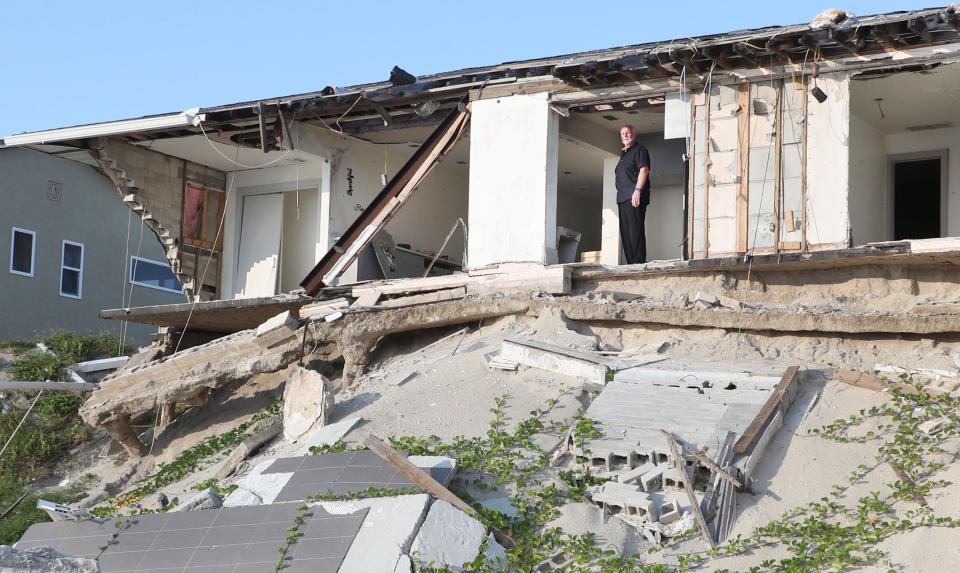
After Ian blew through last fall, FEMA doled out more than $98 million to over 30,000 Volusia County households. That included some $66 million for housing assistance and more than $32 million for other needs.
In Flagler County, FEMA sent more than 1,400 households over $2.1 million. That included more than $1 million for housing assistance, and over $1 million for other needs.
After Tropical Storm Nicole hit Volusia and Flagler counties in early November last year, FEMA distributed more than $3.8 million to over 1,000 Volusia County households, including more than $3.3 million for housing assistance and over $547,000 for other needs.
More than 139 Flagler County households received over $555,000 after Nicole passed through, including more than $512,000 for housing assistance and over $42,000 for other needs.
Altogether more than $104 million in federal funds was sent from Washington, D.C., but it wasn't enough to keep a roof over the head of everyone pummeled by Ian and Nicole.
Money washes out to sea with storm
Martin is shouldering most of the financial burden Ian heaped on him, and the running tally is enough to make him queasy.
His $1 million-plus oceanfront home is a total loss, but he still has to pay the mortgage and property taxes.
His lot sits 29 feet above the beach, but merciless waves destroyed his seawall and kept chewing into the sand behind his house.
Two-thirds of his roof broke loose under the power of Ian's punishing 80 mph winds, and he lost everything from his furniture to his clothes.
"Quite a bit of money was lost by all of us there, and there's no recouping it," Martin said.
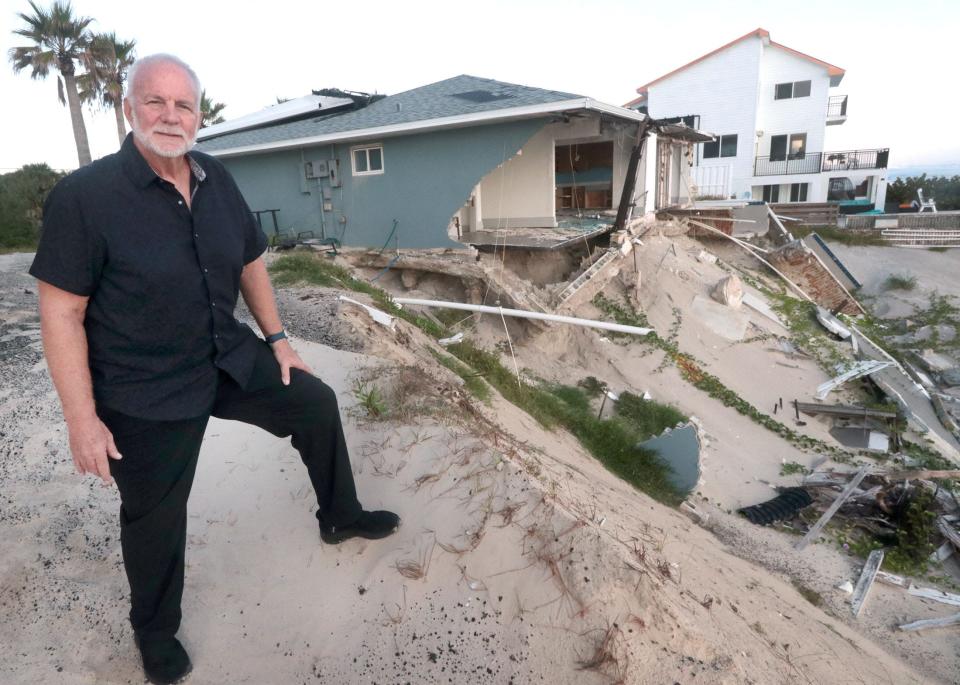
Right next to his mortally wounded home are two more waterfront houses that he owns and rents out. Both rental homes were damaged by Ian, and he spent $400,000 getting one of the rentals back into shape for tenants.
The other rental house is still disfigured.
"It has a big, giant hole in it," Martin said.
He said he received very little insurance coverage, and no FEMA money for any of his properties.
The 65-year-old business developer lived in the house south of the Dunlawton bridge for about three years. Despite what he's been through with Ian, the Tampa native loves the area and wants to stay and rebuild.
He has a building permit and a contractor, and he's eager to get moving on construction. For now he's staying in a Ponce Inlet condominium.
When your neighborhood becomes a lake
Robert Brown has been through a different Ian nightmare on Daytona Beach's mainland.
Twelve months after the tropical storm left Brown's Midtown neighborhood house swimming in more than four feet of murky floodwater, he and others in his urban core community still haven't been able to move back into their homes.
"My house was totaled," said Brown, who'll celebrate his 88th birthday in a few weeks.
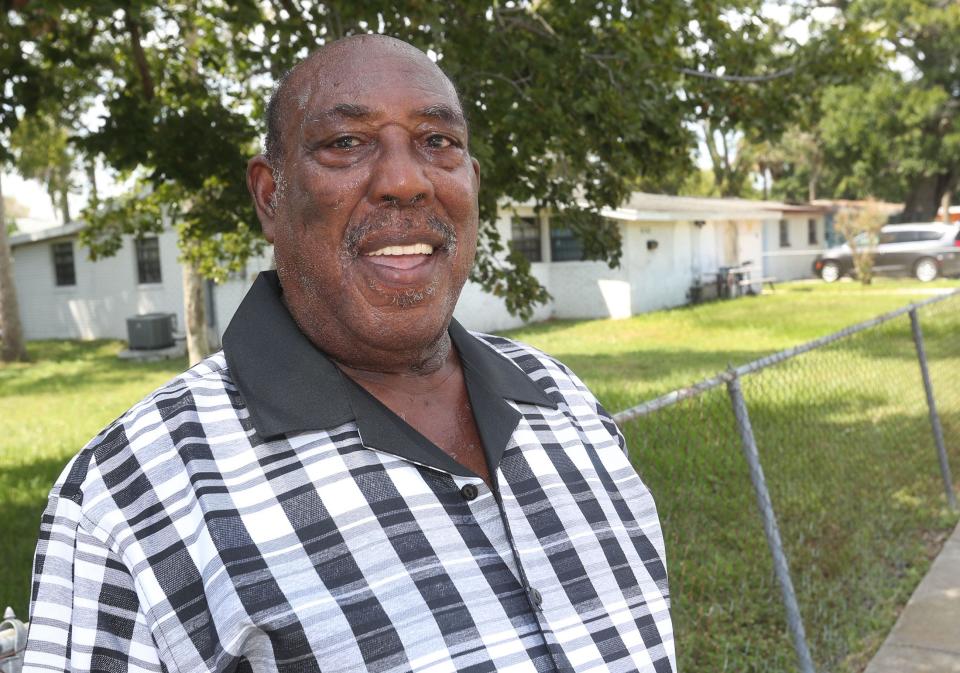
The choking stench of mold, decay and raw sewage that bubbled up in his drains fills the inside of Brown's one-story brick home.
Beds are piled high with once-valued belongings that have become water-damaged, mold-infested junk. Kitchen counters are covered with things that had to be moved above the invading water. Floor tiles are coated with the gritty residue of floodwater that found its way inside.
When Brown built his home on a low-lying corner lot east of Nova Road in 1960, he never imagined it would flood. But it has – six times – and he said the flooding has become more severe in recent years.
He used to carry insurance that would cover some of the damage, but at some point that got too expensive. Now he turns to FEMA for help, and makes his own repairs.
FEMA gave him $700 for living expenses, and $22,000 for repairs last year. He's grateful for the money, but he said it's not enough for what a return to normalcy will require.
He's been going to the Hudson Street house every day to clean and make repairs, trying to restore the place where he and his late wife raised their four children. He's been through this before, repairing and remodeling, then finally moving back in.
It's become part of the rhythm of his life.
Storms can't kill faith
Ian was especially cruel, destroying everything from Brown's air conditioner to his clothing to every piece of furniture he owned.
With Social Security as his only source of income, recovery will be slow.
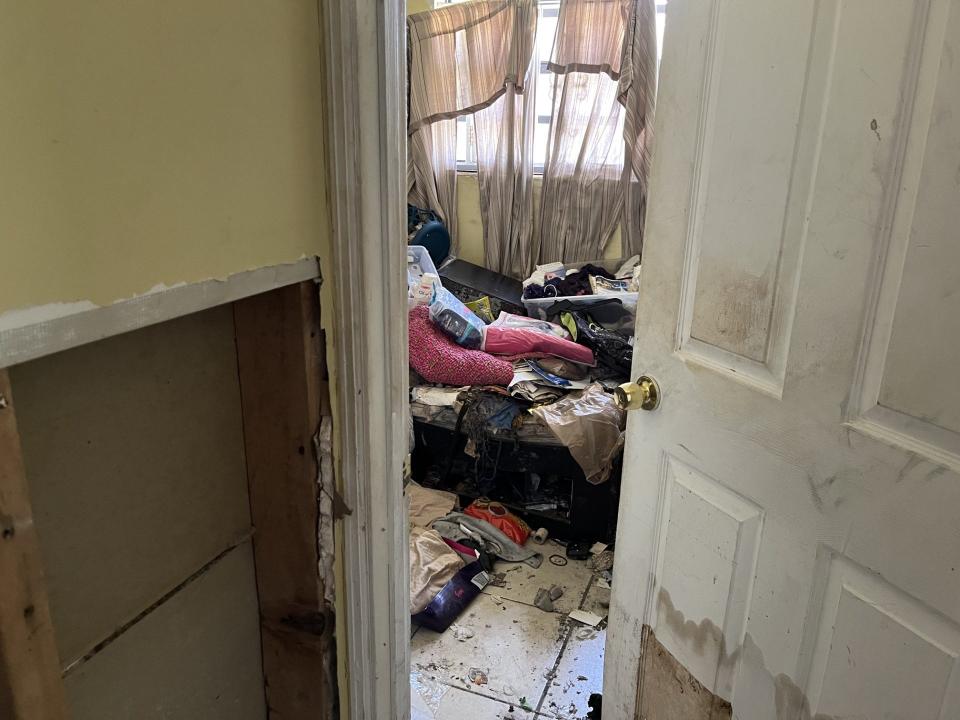
He's been staying at his grandmother's home in Holly Hill, which has remained in the family for generations, so for now he doesn't have to worry about keeping a roof over his head.
One of Brown's daughters tried to help him get out of his house when the floodwater from Ian's unrelenting rain was covering his chain link fence and reaching the bottom of his windows.
They waded through the rising water to get into his van. They made it as far as the stop sign in front of Brown's house, and the new $33,000 van stalled. They had to push it back onto the driveway.
Brown's grandson, who lives in Jacksonville, was able to get to them and take them to his home.
The widower lost almost everything inside his house, but he hasn't lost his faith and positive attitude.
"I think with all I'm going through I'm still being blessed," said Brown, who's a deacon at Church of God By Faith on George Engram Boulevard. "God always makes a way for me."
A terrifying escape
While Brown and his daughter were trying to flee their central Daytona Beach neighborhood, another woman was doing the same thing with her family a few blocks away.
Shakila Lloyd was living in a rental home on Lora Street, located just south of Bellevue Avenue, when Ian and its nonstop rain blasted into the city.
When water started seeping into her house, the 43-year-old Lloyd and her husband decided it was time to leave. The water rose to their knees before they opened any doors.
"All our belongings in the garage were floating. It was terrifying," Lloyd said.
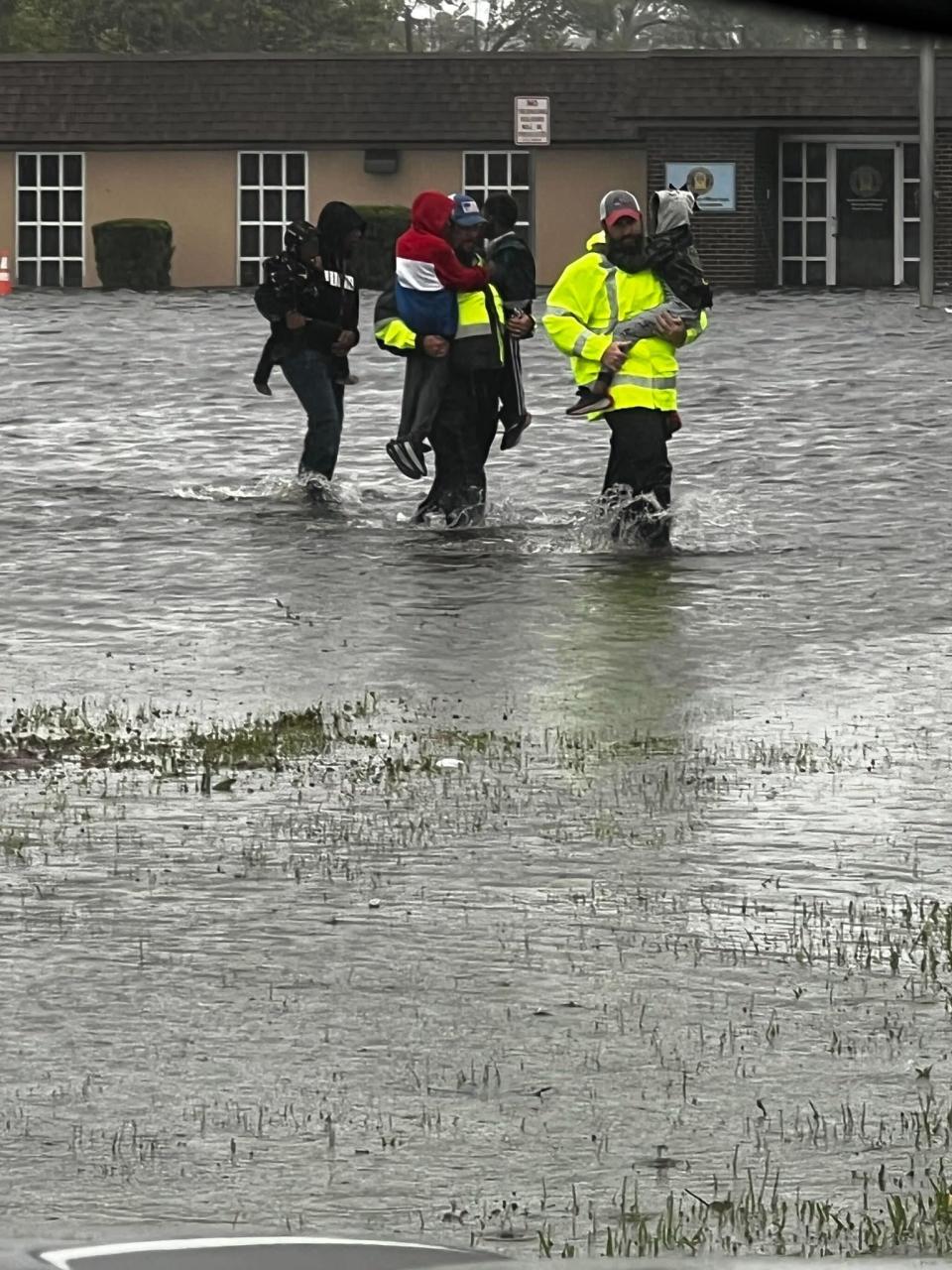
They called for help, but emergency officials said they would have to walk out. So they gathered up their five children and ventured out into the waist-high water.
"I had to hold my 10-year-old son up out of the water," Lloyd said. "Our middle son had to walk with our dog around his neck. He was scared."
One of her daughters was six months pregnant.
"It wasn't a pleasant situation," Lloyd said
They made it out safely, but they lost everything they owned. The FEMA money they received only put a small dent in their mountain of need.
They stayed at Lloyd's mother's house in the Derbyshire neighborhood for about two months, and then moved into an apartment complex that turned out to have problems with cockroaches and crime.
They're hoping to move soon. For now they're counting their blessings.
"I thank God we have a roof over our heads," Lloyd said.
$700,000 hotel bill for Ian refugees
Lloyd and Brown are just two of the hundreds of people whose lives were turned upside down in neighborhoods east of Nova Road last September.
Some were in single-family houses, while others were in a large Section 8-supported apartment complex next to the Nova Canal that overtops its banks during major storms. Hundreds more lived in the Midtown neighborhood's public housing units, which were also swamped in a few feet of floodwater.
Residents in the Caroline Village public housing apartments were out of their homes for months last year and into this year while repairs were made. Daytona Beach Housing Authority Chief Executive Officer Charles Woodyard said he spent more than $700,000 keeping them and other public housing tenants in hotel rooms, and he couldn't do that again this year if he needed to since FEMA has yet to send any sort of reimbursement.
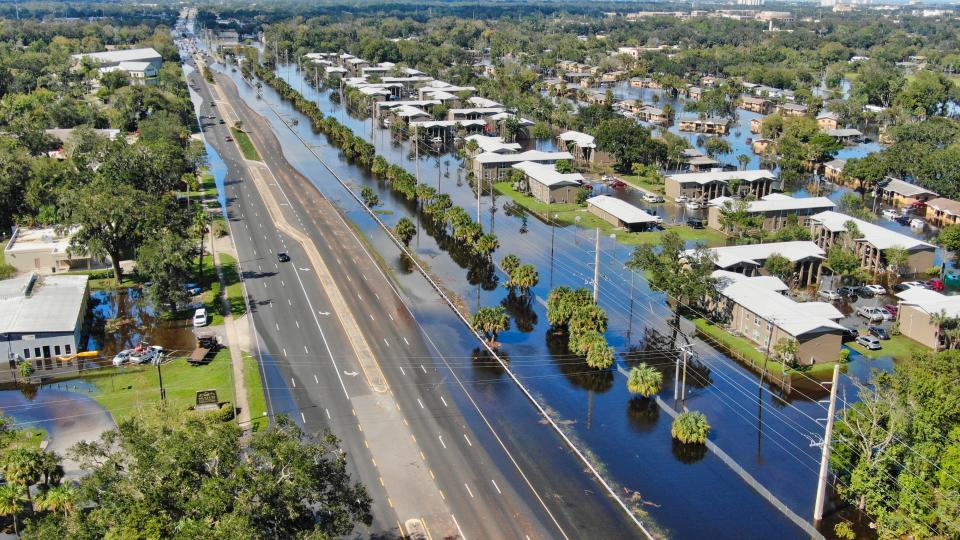
Most tenants are back in the Caroline Village apartments now, and some who used to live there were able to get Section 8 vouchers to live in local apartments.
Buck James has also watched local residents trudge through the past year without a permanent home because of Tropical Storm Ian. James is the executive director of Halifax Urban Ministries, which oversees the Hope Place family shelter, Barracks of Hope Veterans Transitional Housing, Feed a Family program, Bridge of Hope mobile pantry and Pathways to Housing program.
"There are still quite a number of people displaced in Volusia County," James said. "We're slowly whittling that number down."
Federal money that has flowed into the county through the Department of Housing and Urban Development and Department of Children and Families has eased some of the need, James said. Volusia County also has another $329 million in federal disaster recovery funds it's deciding how to spend in the coming months.
"That HUD and DCF money was used to house a lot of these people and help people with housing damage," James said. "If we don't have any significant problems this hurricane season, I think we'll be getting it under control. We are making progress."
Ian beat up all corners of Volusia County
Volusia County's Ian damage extended far beyond Daytona Beach and Daytona Beach Shores. The slow-moving storm dumped over 20 inches of rain on New Smyrna Beach.
More than 1,200 New Smyrna households were left with anywhere from four inches to four feet of water in their homes. The Turnbull Bay-area neighborhoods saw waters rise to six feet.
"This is a town that was devastated," New Smyrna Beach Mayor Fred Cleveland said earlier this year.
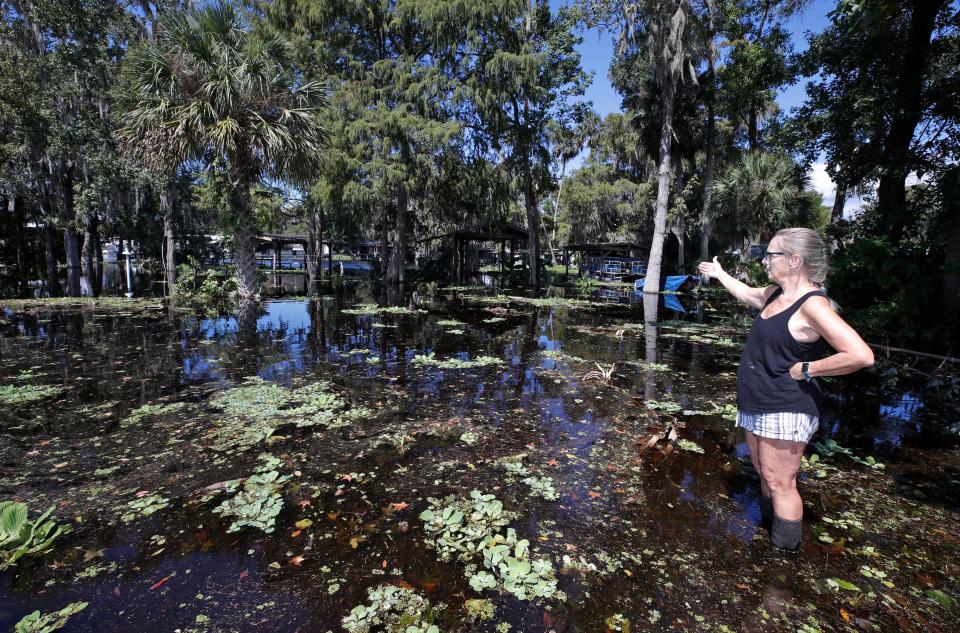
On the banks of the St. Johns River in western Volusia County, some Astor neighborhoods were left with knee-deep water on their streets.
The St. Johns at Astor reached its highest level since 1933 after Ian swept through Central Florida. It took until late December for the river to drop back below flood stage.
Other areas along the St. Johns also reached flood stage, including DeLand and north of Lake Harney. Deltona also had some lake flooding.
Daytona Beach Shores recovering well
Daytona Beach Shores Mayor Nancy Miller has also watched people struggle to recover from Ian. She, the police chief and the city manager try to travel the Daytona Beach Shores coastline every other week.
Some people haven't done anything to their properties but have received help from Volusia County, which has placed sand-filled dams in vulnerable areas to help prevent further coastline erosion.
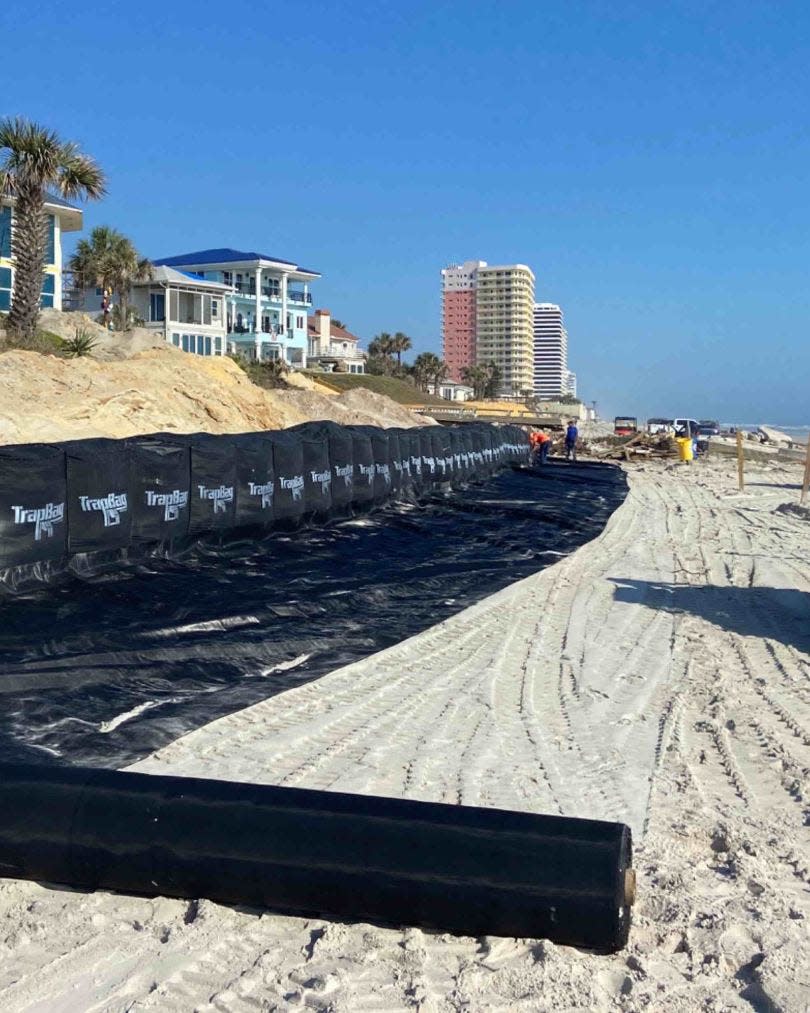
Miller estimated that there are about a dozen properties in Daytona Beach Shores where nothing has been done, a dozen that are very early in the restoration process, and about 20 that appear to be between 90-100 percent complete.
Of the roughly two dozen Daytona Beach Shores condos and hotels that had to close, only two remain shuttered: The former Lexington Inn & Suites at 2323 S. Atlantic Ave., and the Beach Quarters condos at 3711 S. Atlantic Ave.
Miller said that the Lexington Inn was in bankruptcy and the Beach Quarters closed for renovations and repairs.
Miller said she doesn't believe that any Daytona Beach Shores residents are still displaced because of Tropical Storms Ian and Nicole. But many condo owners have faced heavy financial burdens paying for repairs.
Overall, Miller said the community is pulling together.
"They know that they have our support. Volusia County has been fantastic in partnering with us to make sure that everyone in the community is safe," she said.
'An absolutely huge financial burden'
The Dimucci Twin Towers condominium in Daytona Beach Shores has a new, considerably stronger seawall in place now, said Ed Offerman and Shirley Harrington. The two residents are a part of the condo association, which led the community through repairs on the property.
Work is on track to be finished by the end of the year, including pool deck and drainage repairs, they said.
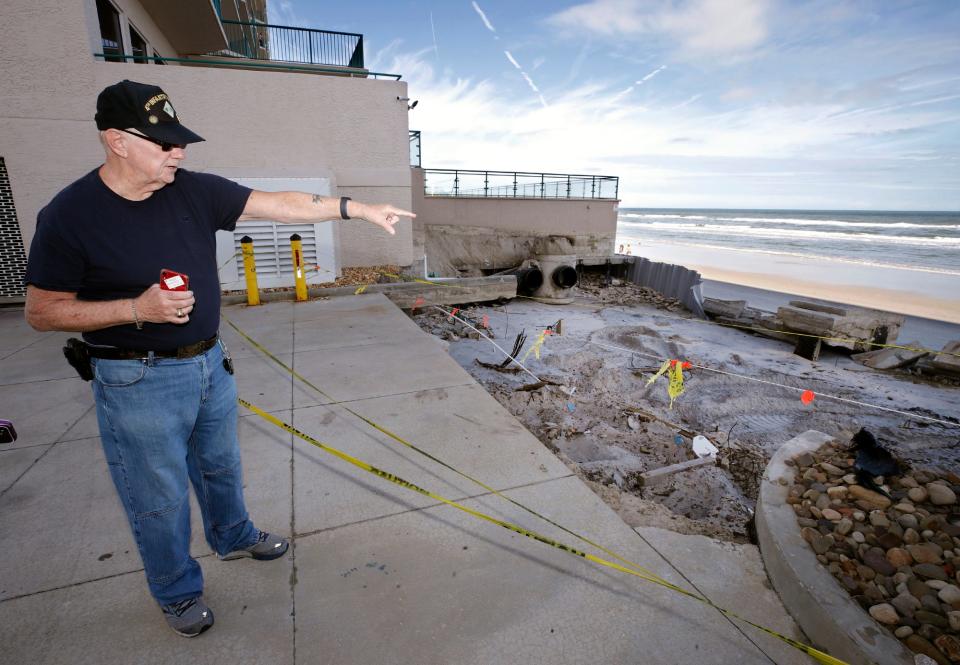
But the repair work has come at a heavy cost to condo residents, around $3.5 million total, Offerman said. The condo association charged a special assessment to owners of the community's 136 units to pay for it, he said.
If the $3.5 million tally was evenly split among residents, that would mean a $25,735 bill for each condo unit.
"This was a huge financial burden on our owners, an absolutely huge financial burden," Harrington said.
Offerman said he and others had to borrow money to pay the special assessment. Some had it worse.
"There were a few owners that were forced to sell at distressed prices," he said.
Hurricane Ian still felt in Daytona: Nearly a year after Hurricane Ian hit, mom and two kids struggle to find housing
Volusia County Emergency Services Department Director Jim Judge said people countywide are still working to rebuild financially, especially those who didn't have flood insurance.
He said there's also still a lot of work to be done on Volusia County's beaches, but he sees progress.
"I think overall people are doing very well," Judge said. "We had a lot of volunteer agencies, a lot of groups coming in to help support those that were affected."
You can reach Eileen at Eileen.Zaffiro@news-jrnl.com
This article originally appeared on The Daytona Beach News-Journal: Last year's Tropical Storm Ian continues to hurt Volusia Co. residents

